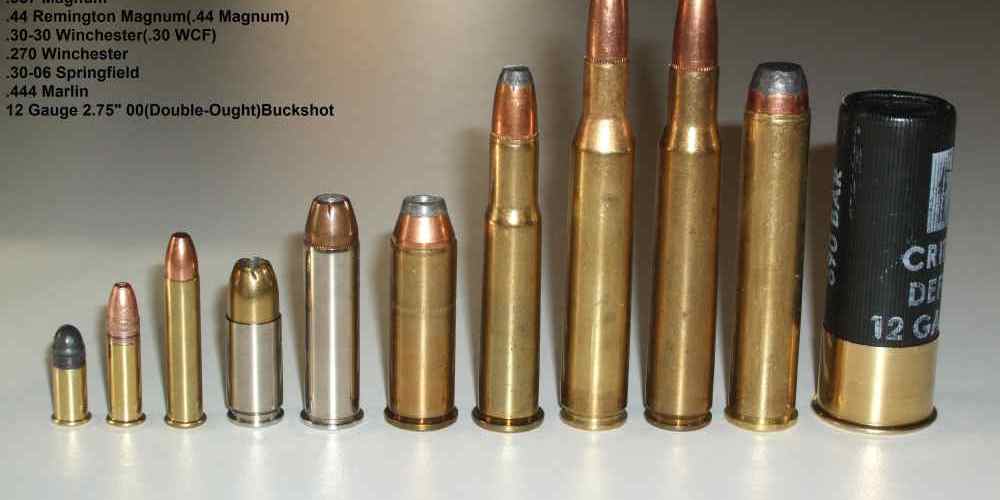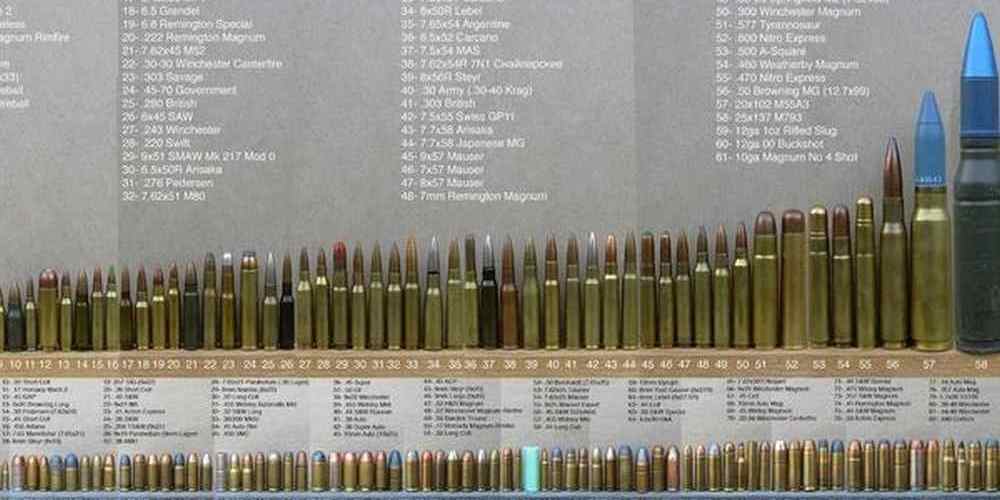“Shoot responsibly, protect the environment.”
Lead Contamination in Soil and Water Sources
Rifle ammunition and shooting have a significant impact on the environment, particularly when it comes to lead contamination in soil and water sources. Lead is a toxic metal that can have detrimental effects on both human health and the environment. When bullets are fired from rifles, they release lead particles into the air, which can then settle into the soil and water sources nearby.
Lead contamination in soil is a major concern, as it can persist for many years and have long-lasting effects on the ecosystem. When lead particles from bullets seep into the soil, they can be absorbed by plants and animals, leading to potential health risks for both wildlife and humans. In addition, lead can leach into groundwater, contaminating drinking water sources and posing a threat to public health.
One of the main ways that lead contamination from rifle ammunition enters water sources is through runoff. When it rains, lead particles in the soil can be washed into nearby streams, rivers, and lakes, where they can accumulate and pose a threat to aquatic life. Fish and other aquatic organisms can ingest lead particles, leading to poisoning and potential population declines.
In addition to runoff, lead contamination in water sources can also occur through direct deposition. When bullets are fired into bodies of water, they can release lead particles that sink to the bottom and accumulate over time. This can have a significant impact on the health of aquatic ecosystems, as lead can persist in water for many years and continue to pose a threat to wildlife.
Lead contamination from rifle ammunition is a serious environmental issue that requires attention and action. There are several ways that this problem can be addressed, including the use of lead-free ammunition and proper disposal of spent bullets. Lead-free ammunition is an alternative to traditional lead-based bullets that is designed to reduce the environmental impact of shooting. By using lead-free ammunition, shooters can help minimize the release of lead particles into the environment and protect soil and water sources from contamination.
Proper disposal of spent bullets is also important in preventing lead contamination. When bullets are fired, they can fragment into small pieces that can remain in the soil for many years. By collecting and properly disposing of spent bullets, shooters can help prevent lead from leaching into the environment and posing a threat to wildlife and human health.
Overall, the environmental impact of rifle ammunition and shooting is a significant concern, particularly when it comes to lead contamination in soil and water sources. By taking steps to reduce the release of lead particles into the environment and properly disposing of spent bullets, shooters can help protect the environment and ensure the health of ecosystems for future generations.
Effects on Wildlife Population and Ecosystems
Rifle ammunition and shooting have a significant impact on wildlife populations and ecosystems. The use of rifles for hunting and recreational shooting can lead to various environmental consequences that can affect the balance of ecosystems and the well-being of wildlife.

One of the most direct impacts of rifle ammunition is the harm it can cause to wildlife populations. When bullets are fired, they can injure or kill animals, leading to a decrease in population numbers. This can disrupt the natural balance of ecosystems and have cascading effects on other species that rely on the affected animals for food or habitat.
In addition to direct harm to wildlife, rifle ammunition can also have indirect effects on ecosystems. Lead is a common component of rifle ammunition, and when bullets are left in the environment, they can leach lead into the soil and water. This can poison plants, animals, and even humans who come into contact with contaminated resources. Lead poisoning can have devastating effects on wildlife populations, causing illness, reproductive issues, and even death.
Furthermore, the noise and disturbance caused by shooting can disrupt wildlife behavior and habitat use. Animals may be scared away from their natural habitats, leading to changes in migration patterns, feeding habits, and breeding success. This can have long-term consequences for the health and stability of ecosystems, as wildlife populations struggle to adapt to the constant presence of human activity.
The cumulative impact of rifle ammunition and shooting on wildlife populations and ecosystems is a cause for concern. As human populations continue to grow and expand into natural areas, the pressure on wildlife from hunting and recreational shooting is only increasing. It is essential for hunters and shooters to be aware of the environmental consequences of their activities and take steps to minimize their impact on wildlife and ecosystems.
One way to reduce the environmental impact of rifle ammunition is to use non-toxic alternatives to lead. Copper and steel bullets are available as alternatives to traditional lead ammunition and can help reduce the risk of lead poisoning in wildlife. Additionally, proper disposal of spent ammunition and casings can help prevent contamination of the environment with harmful chemicals.
Another way to mitigate the impact of rifle ammunition on wildlife populations is to practice responsible hunting and shooting practices. This includes following regulations and guidelines set by wildlife management agencies, using ethical hunting practices, and respecting the natural habitats of wildlife. By being mindful of the impact of their actions, hunters and shooters can help protect wildlife populations and preserve the health of ecosystems for future generations.
In conclusion, rifle ammunition and shooting have a significant impact on wildlife populations and ecosystems. The use of lead ammunition can lead to direct harm to wildlife through injury and death, as well as indirect harm through lead poisoning. The noise and disturbance caused by shooting can disrupt wildlife behavior and habitat use, leading to long-term consequences for ecosystems. By using non-toxic alternatives to lead ammunition, practicing responsible hunting and shooting practices, and being mindful of the environmental consequences of their actions, hunters and shooters can help protect wildlife populations and preserve the health of ecosystems. It is essential for all individuals who engage in rifle shooting to consider the environmental impact of their activities and take steps to minimize their impact on wildlife and ecosystems.
Carbon Footprint of Ammunition Production
Rifle ammunition and shooting have a significant impact on the environment, particularly in terms of carbon footprint. The production of ammunition involves various processes that contribute to greenhouse gas emissions, which in turn contribute to climate change. Understanding the environmental impact of rifle ammunition and shooting is crucial for making informed decisions about how we use these products.
One of the key factors contributing to the carbon footprint of ammunition production is the manufacturing process itself. The production of rifle ammunition involves the extraction and processing of raw materials, such as lead, copper, and brass. These processes require energy and resources, which result in the release of greenhouse gases into the atmosphere. Additionally, the transportation of these materials to manufacturing facilities also contributes to carbon emissions.
Furthermore, the manufacturing of rifle ammunition involves the use of machinery and equipment that consume energy and produce emissions. The use of fossil fuels to power these machines further adds to the carbon footprint of ammunition production. In addition, the packaging and distribution of ammunition also contribute to carbon emissions, as these processes require energy and resources.
Another aspect of the environmental impact of rifle ammunition and shooting is the disposal of spent cartridges. After firing a round of ammunition, the spent cartridge casing is left behind, often littering the environment. These casings can take hundreds of years to decompose, releasing harmful chemicals into the soil and water. This not only poses a threat to wildlife and ecosystems but also contributes to the overall carbon footprint of shooting activities.
In addition to the production and disposal of rifle ammunition, the act of shooting itself also has environmental consequences. The combustion of gunpowder in firearms releases carbon dioxide and other pollutants into the atmosphere. This contributes to air pollution and can have negative effects on human health and the environment. Furthermore, the noise pollution generated by shooting activities can disrupt wildlife and disturb natural habitats.
Despite these environmental impacts, there are steps that can be taken to mitigate the carbon footprint of rifle ammunition and shooting. One way to reduce the environmental impact of ammunition production is to use recycled materials in the manufacturing process. By reusing materials such as lead and brass, manufacturers can reduce the need for new resource extraction and lower carbon emissions.
Additionally, shooters can take steps to minimize their environmental impact while enjoying their sport. This includes properly disposing of spent cartridges and cleaning up after shooting activities. Using lead-free ammunition can also help reduce the environmental impact of shooting, as lead is a toxic substance that can harm wildlife and ecosystems.
Overall, it is important to consider the environmental impact of rifle ammunition and shooting and take steps to minimize carbon emissions and other pollutants. By being mindful of how we use these products and making informed choices, we can help protect the environment for future generations.
Noise Pollution and Disturbance to Wildlife
Rifle ammunition and shooting have a significant impact on the environment, beyond just the physical damage caused by the bullets themselves. One often overlooked aspect of this impact is the noise pollution generated by shooting activities. The loud sounds produced by firearms can disturb wildlife, disrupt ecosystems, and even harm human health.
When a rifle is fired, it generates a loud noise that can travel for miles. This noise can startle and scare off wildlife, disrupting their natural behaviors and causing stress. In some cases, the noise can even cause physical harm to animals, such as hearing damage or disorientation. This disturbance can have far-reaching effects on the ecosystem, as animals may be forced to abandon their habitats or alter their behavior to avoid the noise.
In addition to the direct impact on wildlife, noise pollution from shooting can also have negative effects on human health. Studies have shown that exposure to loud noises can lead to hearing loss, stress, and other health problems. This is especially concerning for individuals who live near shooting ranges or areas where shooting is common. The constant barrage of loud noises can have a significant impact on their quality of life and overall well-being.
To mitigate the environmental impact of rifle ammunition and shooting, there are several steps that can be taken. One option is to use noise-reducing equipment, such as suppressors or muzzle brakes, to minimize the sound generated by firearms. These devices can help reduce the noise pollution caused by shooting activities and lessen the impact on wildlife and human health.
Another approach is to limit shooting activities in sensitive areas, such as near wildlife habitats or residential areas. By designating specific areas for shooting and implementing regulations to control noise levels, it is possible to minimize the impact on the environment and reduce disturbance to wildlife.
Education and awareness are also key components in addressing the environmental impact of rifle ammunition and shooting. By educating shooters about the importance of minimizing noise pollution and respecting wildlife habitats, it is possible to promote responsible shooting practices and reduce the negative effects on the environment.
Overall, the environmental impact of rifle ammunition and shooting goes beyond just the physical damage caused by bullets. Noise pollution generated by shooting activities can have far-reaching effects on wildlife, ecosystems, and human health. By taking steps to minimize noise pollution, limit shooting activities in sensitive areas, and promote responsible shooting practices, it is possible to mitigate the impact on the environment and protect wildlife for future generations.
Sustainable Alternatives for Shooting Sports and Hunting
Rifle ammunition and shooting have a significant environmental impact that often goes unnoticed. From the production of ammunition to the discharge of firearms, there are various ways in which shooting sports and hunting can harm the environment. However, there are sustainable alternatives that can help mitigate these impacts and promote responsible shooting practices.
One of the main environmental concerns associated with rifle ammunition is the use of lead. Lead is a toxic metal that can contaminate soil and water sources, posing a threat to wildlife and human health. When lead bullets are fired, they can fragment into small pieces that can be ingested by animals, leading to lead poisoning. This is particularly concerning for birds of prey, such as eagles and hawks, which can be exposed to lead when scavenging on carcasses shot with lead ammunition.
To address this issue, many shooters and hunters are turning to non-lead ammunition alternatives, such as copper or steel bullets. These alternatives are just as effective as lead bullets but do not pose the same environmental risks. By switching to non-lead ammunition, shooters can help reduce the amount of lead pollution in the environment and protect wildlife from lead poisoning.
Another environmental impact of rifle ammunition is the carbon footprint associated with its production. The manufacturing of ammunition requires energy and resources, which contribute to greenhouse gas emissions and climate change. Additionally, the transportation of ammunition to retailers and shooting ranges further adds to its carbon footprint.
To reduce the environmental impact of shooting sports, shooters can opt for locally sourced ammunition or reload their own cartridges. By sourcing ammunition from local manufacturers, shooters can reduce the emissions associated with transportation and support local businesses. Reloading cartridges also allows shooters to reuse spent casings, reducing the need for new materials and minimizing waste.
In addition to the environmental impact of rifle ammunition, the act of shooting itself can have negative consequences for the environment. The noise and disturbance caused by gunfire can disrupt wildlife and disturb sensitive habitats. This is especially problematic in areas where endangered species or protected habitats are present.
To minimize the impact of shooting on wildlife and habitats, shooters can practice responsible shooting etiquette. This includes using suppressors or muzzle brakes to reduce noise levels, shooting in designated areas away from sensitive habitats, and cleaning up after shooting sessions to prevent littering. By being mindful of their surroundings and practicing good stewardship, shooters can enjoy their sport while minimizing their impact on the environment.
Overall, the environmental impact of rifle ammunition and shooting is a significant concern that requires attention from shooters, hunters, and manufacturers alike. By adopting sustainable alternatives and practicing responsible shooting practices, shooters can help protect the environment and preserve wildlife for future generations to enjoy. Whether it’s switching to non-lead ammunition, reloading cartridges, or practicing good shooting etiquette, there are many ways in which shooters can reduce their environmental footprint and promote sustainability in shooting sports and hunting.





